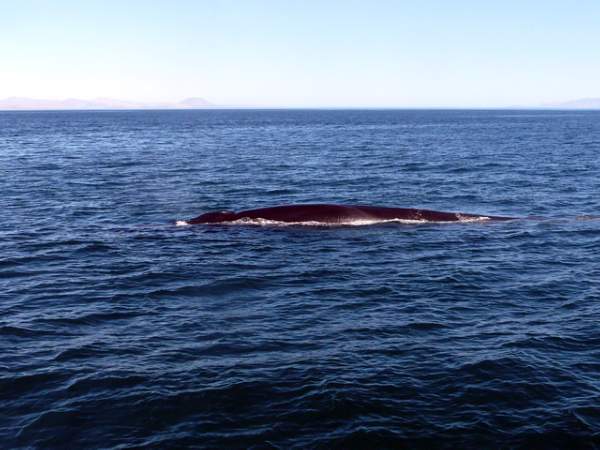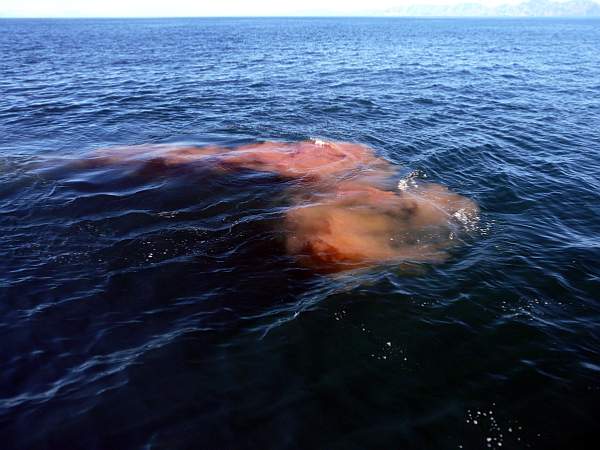Published in the Ocean Watch column, Honolulu Star-Advertiser © Susan Scott
May 17, 2010
Last week as I explored the Sea of Cortez (Gulf of California) on my sailboat Honu, I was in love with her diesel engine. This week, I love her sails. They’re the reason, I believe, a fin whale came calling.
We’d been motoring in flat seas when whale spouts caught our attention. Two shiny black backs appeared in the binoculars and seemed to be heading our way. Suddenly Honu’s engine seemed loud, stinky and obtrusive. Only a whisper of wind touched the boat, but we stopped the motor, hoisted the sails and glided at 2 mph over glassy, calm water.
That’s slow, even for a sailboat, and apparently it’s slow for fin whales, too, because the two began gaining on us.
How did we know they were fin whales? We didn’t at the time. Watching whales is like playing Clue. You get hints, usually one body part at a time, then try to determine which of more than a dozen species just made your day.
Fin whales, my whale book informed me, are similar to Bryde’s (pronounced BROO-des; it’s Norwegian), sei (SAY — Norwegian again) or blue, all baleen whales.
Baleen whales are living throw-nets, gulping enormous amounts of water rich in shrimp, squid or small fish. The whale pushes the water out of its mouth through strainers called baleen plates that grow down from the gum of the upper jaw, then swallows the catch.
One difference between these four whales is their size. My book compares whale lengths with a picture of a school bus. Bryde’s is about one bus long. A sei whale’s head and tail would poke out over both ends of the bus. Fin whales are just less than two buses long; blue whales, over two.
It’s a good way of picturing size, but these whales rarely show you their length all at once, nor is there any scale out there in the ocean. Unless they swim up to your school-bus-size boat.
As we sailed on that quiet afternoon, we could hear the two whales breathe and smell their breath after a blow. It’s thrilling to be that close to whales, but the odor isn’t what you’d call refreshing. It’s the essence of dead fish.

One whale veered off. The other dived. For long minutes we watched the first swim away, fearing the second had left us, too. Then, in a startling whoosh, two huge black blowholes (all baleen whales have double blowholes) appeared just yards from our side, and the creature took a breath.
The whale, nearly twice as long as our 37-foot boat, had been beneath its somewhat whale-shaped hull.
The animal surprised us again by, well, pooping. A cloud the color of Hawaii’s red dirt, and about half the size of our boat, spread through the water in the whale’s wake. This whale had been gulping the shrimp so well known here in the gulf.

It was then we knew we’d been checked out by a fin whale, but not by its body size or its poop. In spite of my overexcited state, I got a picture of the one characteristic unique to fin whales: a distinct, pale gray V-shape, called a chevron, on the back of its head.
Whales know the sound of motors in their world, but what must they think of sailboats? I’d like to believe the fin whale came to visit because it was curious about this silent round-bellied creature floating slowly on the surface of its home.
Sailors jokingly call powerboats stinkpots, and motor-boaters call sailing vessels rag boats. Both means of marine transportation have their charms. This week, though, I love my rags.